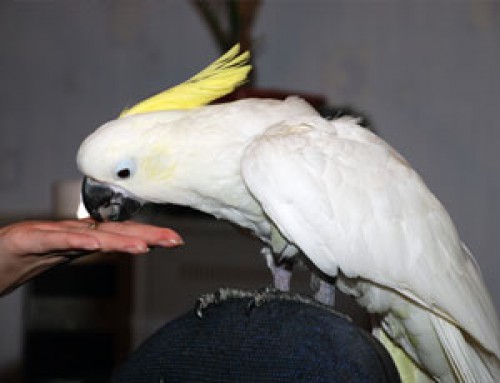
Triton cockatoo(Cacatua galerita triton)
Phylum —chordata
Class — aves
Order — psittaciformes
Family — cacatuidae
Genus – cacatua
Appearance
The Triton cockatoo is one of the four subspecies of the Sulphur-crested cockatoo.It is white, with a large yellow crest that it can raise. It is 45–55 cm (18–22 in) long. This subspecies differs from the Sulphur-crested cockatoo in that it is with broader crest feathers and has a pale blue periophthalmic ring instead of white.
Habitat
It can be found across most of New Guinea and the surrounding islands, including the Western Islands, the D'Entrecasteaux Islands and the Louisiade Archipelago. It can also be found throughout most of the islands in the western area of the Solomon Sea, with the exception of Aru Islands.
Behavior
The Triton Cockatoo is almost exclusively arboreal and are rarely found in groups numbering more than half a dozen individuals. They prefer the thick jungle forest found on hillsides and whilst most are commonly found in lower and moderate elevations they have been found in forests 1,850 m (6,070 ft) above sea level.
Diet
They mainly eat seeds, fruits and occasionally insects.
Reproduction
They are aggressive, solitary and territorial during breeding season, which is from May to September. It nests in tree cavities, like most cockatoos. They fill the nest with leaves and vines as padding and lay 2-3 eggs, which both parents incubate for approximately 26 days.
Average lifespan is about 40 years, but they can live up to 100 years.
In captivity
Triton cockatoos are large birds that need very spacious enclosures. At a minimum, the cage should have a footprint of about 40 inches by 40 inches and at least 5 feet tall. A bigger cage is better, and best of all is an aviary environment.
Bird bathing is strictly an individual preference. In the wild, some cockatoos enjoy standing in the rain while others avoid it.
The Triton cockatoo is a highly active and lively bird that requires plenty of exercise to maintain proper health. Owners of Triton cockatoos should allow their pets a minimum of 3 to 4 hours of outside-the-cage playtime every day.
Provide the bird plenty of space to climb, stretch, and flap its wings. Most cockatoo owners provide their birds with play stands or special perches for their exercise needs.
Give your cockatoo plenty of interactive toys that can be chewed, grasped, and climbed. Cockatoos have one of the most powerful beaks in the parrot world, expect to give them durable toys. Birds get tired of the same toys every day, plan to rotate them in and out to keep your bird interested and distracted from unwanted behaviors like chewing on your wooden furniture.
In the wild, Triton cockatoos feast on seeds, grain, and insects that they harvest from trees. In captivity, they need a varied diet that includes high-quality pellets and fresh fruits and vegetables. Experienced owners of Triton cockatoos take great care in preparing their birds' diets, as cockatoos can quickly suffer from the effects of poor nutrition.
A well-formulated, high-quality parrot pellet should account for 75 percent of its dietary needs. The remaining 25 percent should be fresh fruits and vegetables. Start by offering your bird 1/4 cup of pellets and 1/4 cup of fruits daily. Increase the amount as needed. Nuts and seeds can be given sparingly as training treats.
 Russian
Russian
 English
English























